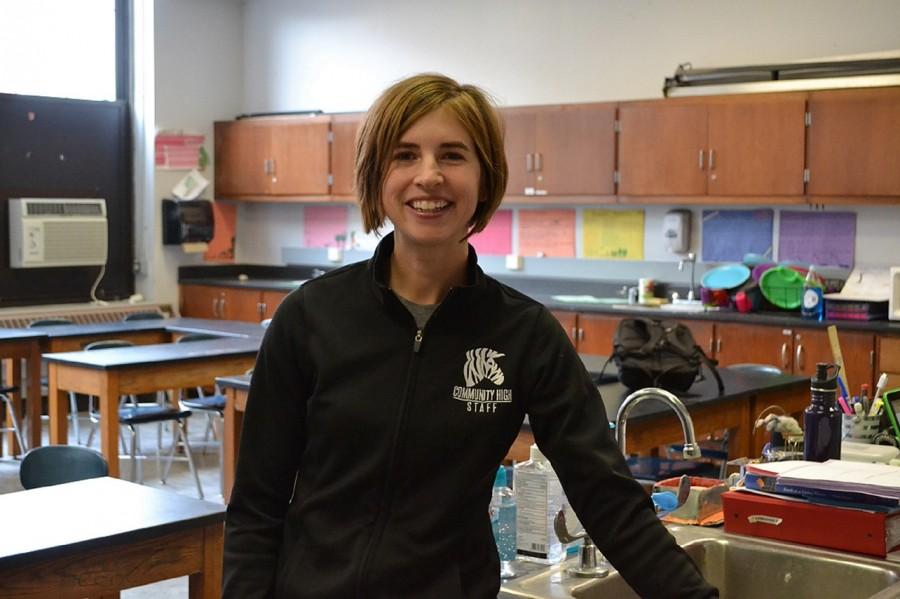Changing Pace
Changes in the Ann Arbor Public Schools Teacher Evaluation Cause Discussion Within the District
Courtney Kiley, a science teacher at Community High School in Ann Arbor
Superintendent Jeanice Swift, with her hands folded in front of her, stands on the yellow bathed Huron high school stage with a handful of members of the Ann Arbor Public School (AAPS) Board of Education seated beside her. This is the view seen from row after row in the dimly lit auditorium during yet another Board of Education meeting. The room is filled with people of all ages and backgrounds gathered together to improve the AAPS system and better understand the current events unfolding within it.
“I think it’s very important to support public schools and to be a part of it,” said Sharon Simonton, a frequent Board Meeting attendee and mother of a current AAPS student. Though the crowd is filled with many parents of AAPS students, the meetings are open to all Ann Arbor citizens and concerned neighbors often sit side by side with teachers and parents. During Public Commentary, a variety of people stand to cite concerns publicly before the school board, creating a division between financial overviews, and awarding ceremonies.
In recent years, a wave of change has come through the AAPS system, a change not only affecting the city but the entire state’s education system. “I think it’s a reflection of what’s been going on in the state,” said Simonton “Probably for about nearly two decades, in terms of progressively losing funding, changing the funding structure.” In most recent months, the predominant subject of board meetings has been a newly released teacher evaluation system, one with new, dramatic changes. These changes have caused conflict between the Board of Education and teachers and has become a common topic for those who speak before the board during the Public Commentary section of the night.
The new evaluation was rolled out in early November and was a shock to teachers who had believed they would be evaluated using the previous system called the Blue Book– the same one used as a model for the new Michigan law in reference to teacher evaluations.
In previous years, the administration directed teachers to pick two domains out of a given four that they viewed to be in need of improvement for their professional development. The teachers were then asked to analyze their work within the domain and report back to the administration. With the new system, teachers must complete all four domains, which in turn each contain a certain number of elements, over all totalling seventy-six. Along with this self evaluation, the new system also requires teachers to document achievement with pre- and post- tests and record learning growth for the lowest thirty-percent of their class, which they must also identify.
Though the new system of evaluation is still a topic of conflict between teachers and administration, Superintendent Swift has gathered a panel of teachers to work on the implementation of the new system. The teacher evaluation continues to be an ongoing issue within the district, one that will be talked about both inside and outside of meetings until hopefully a mutually beneficial resolution is found.













